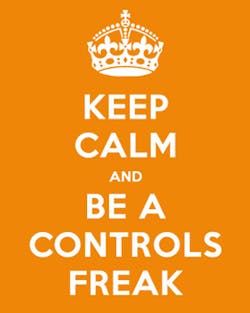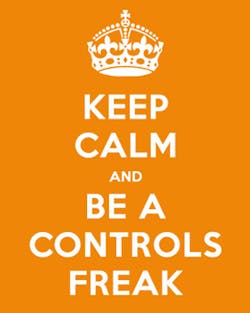101 Ways to ‘Rock’ as a Building-Automation and Controls Technician, Part 2 of 4
Controls technicians are the vital link between your building-control-system designs and your customers. If you work with or know someone who wants to become a “controls freak”-style technician in the building-automation and controls industry, you have to check out these 101 ways they can make it happen.
I hope this list strikes a chord with the community and gets shared amongst those who are or work with controls and automation technicians.
Here is the second group of 25 ways to rock, numbers 26 through 50. If you missed the first group of items 1 through 25, click here. And keep an eye on upcoming editions of Networked Controls Plus for the rest of the list!
26. Read through the programming before messing with the variables of a controller. It’s better to understand what those variables are used for before you make changes without realizing that you are causing another problem somewhere else.
28. Know when to use simple programming to accomplish difficult tasks and complicated programming to make tasks simple.
29. Get a nice tool bag and tool pouch. You will be using them over a long period of time.
30. Controls are widgets. It is you that designs, configures and programs them. Do your part well and just about any automation controller or device can be used.
31. Do not be afraid to use a part, device, or software to create a solution even though it may not be sold or manufactured by your main vendor.
32. Provide solutions, not sales or products.
33. Always let the customer log into the system and see that things are working before leaving the site.
34. Perform a save of all controllers periodically while on site and save them on a corporate server drive or somewhere safe for when “bad things” happen. Do not be that guy asking the customer if he or she has any backups because yours are from the as-builts when the job was installed three years ago.
35. Carry several USB flash drives. You may lose them or fill them up, and they always come in handy.
36. Buy a fold-out chair and tiny table. Sometimes when you are in the field you really need to do office work, such as programming in a mechanical room, and a desk and chair is probably not going to be easily found.
37. Do not use your mouth to blow into a poly tube going to a pressure transducer like it is a straw in a milkshake. It may not seem like a lot of pressure, but the pressure created by your hot air is enough to make the sensor unreliable or blow it all together.
38. Become proficient with the CAD program you use for documenting schematics and airflow drawings. In downtime you can help out with engineering as well as provide better redlines that you send back to the engineering department.
39. If you redline the submittal drawings to the point it looks like you bled on them, contact those who made the drawings. Either you or they are not doing something right if so many changes are being made from what was proposed.
40. You know you are rocking it when your tool bags get smaller and smaller. You will have arrived when you only have about 10 to 15 tools on your hip and can say, “If I cannot fix it with these tools, then I do not need to be fixing it.”
41. Fix the things that make the biggest impact first.
42. Fans and pumps on VFD control should not oscillate up and down quickly. If they are doing so, tune the PID loop or check the programming and find out why.
43. Put trend logs on every input and output. Include any variables that may be important as well.
44. It is always going to be the controls’ fault. Your computer is the one showing the problem or alarm so it obviously is the problem, right? Accept it and refer to item #2: Don’t point the finger (or any fingers) at the “other guy.” Find out what the problem is and tell the right person to call another right person who can actually fix the problem. Be the hero and the first person the customer calls.
45. Every input should have an alarm or event to identify when the sensor goes way out of range. This is just to notify of a bad sensor.
46. Label devices so others not familiar with the system can quickly know the function of that device.
47. Always measure twice, cut once. When the opposite happens, it looks like you measured it with a micrometer, marked it with chalk, and cut it with an axe.
48. Tiny terminals with small screwdrivers do not require your guns to torque them down. You will just break the terminal or make the next guy trying to use his pocket screwdriver with thumb and forefinger want to punch you in the nose.
49. Do not nick wire insulation and leave it. Do not put tape over it, either. Cut and strip it again.
50. Make sure all wires do not leave an inch and a half of bare copper showing outside the terminal. Get the insulation as close to the terminal without the terminal pinching down on the insulation.


